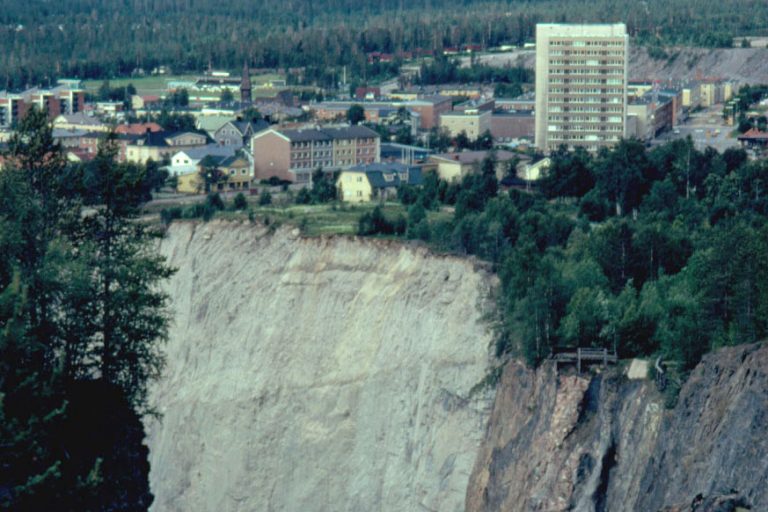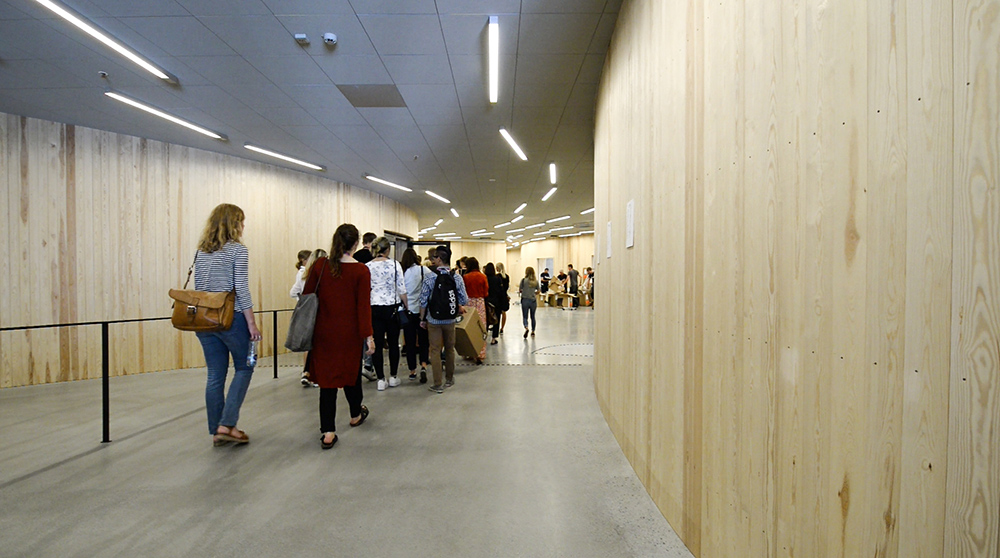As the mine expands, the town of Kiruna will be deconstructed, relocated and reconstructed. It is a large-scale, slow transformation that will take decades. The first buildings, closest to the mine, were demolished in spring 2015, and in their place the artistic intervention Logbook is taking shape – a memorial landscape with traces of the old flats, courtyards and walkways.
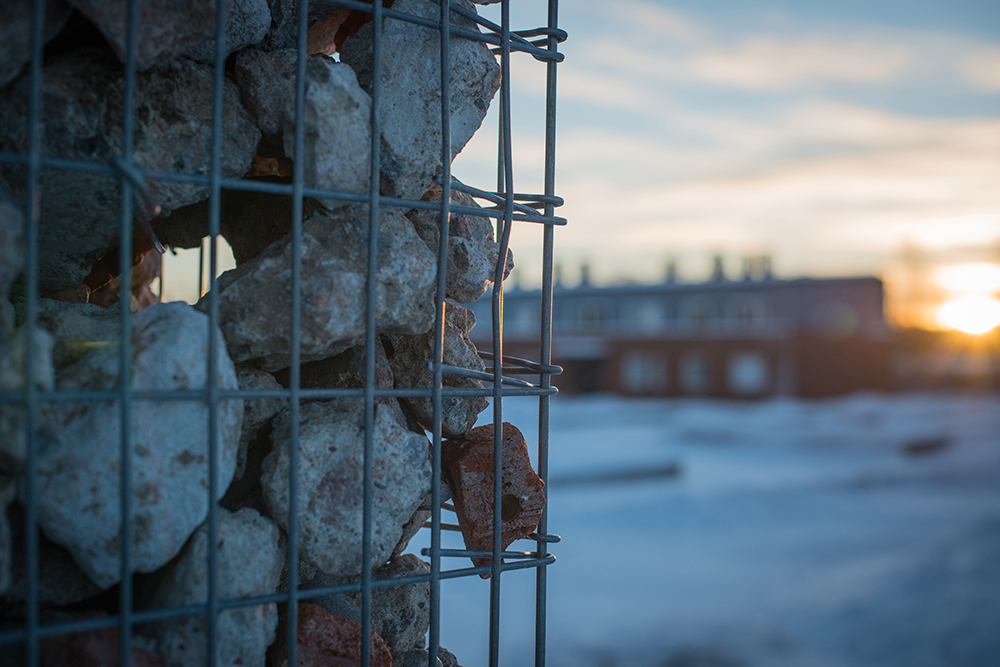
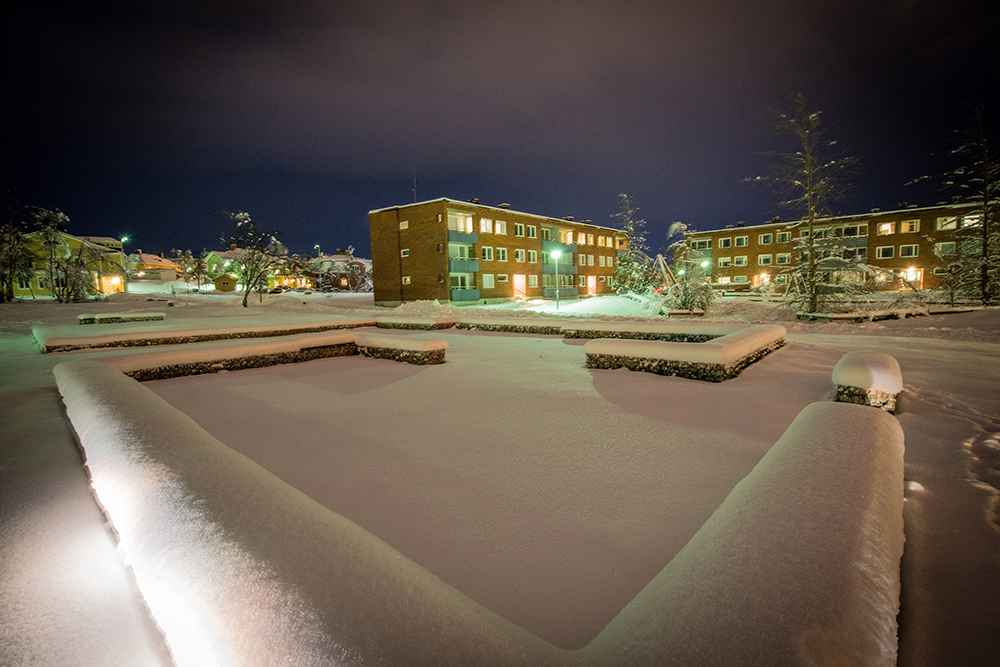
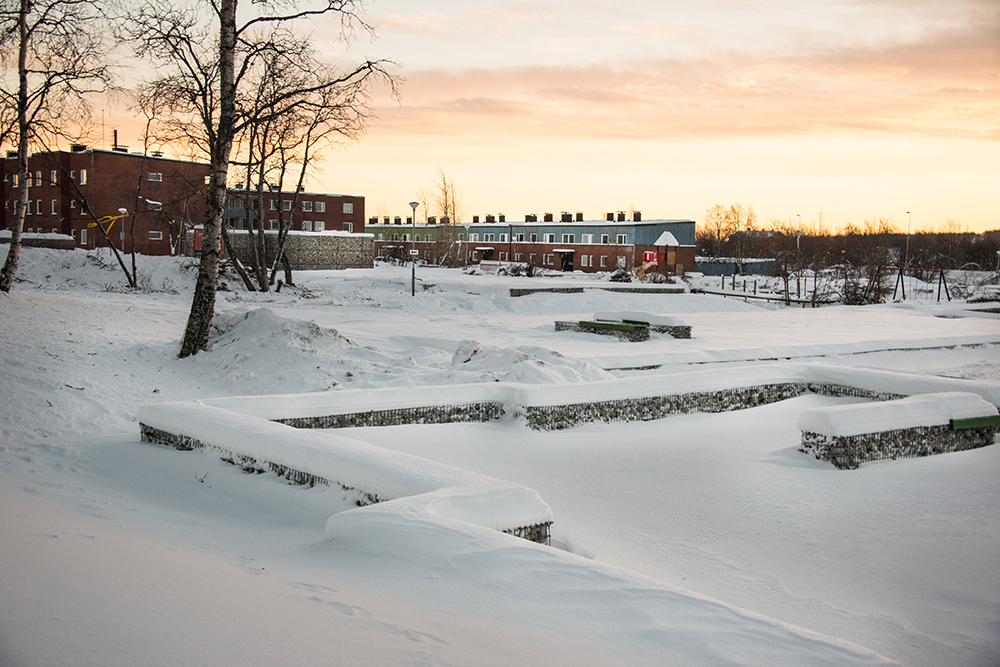
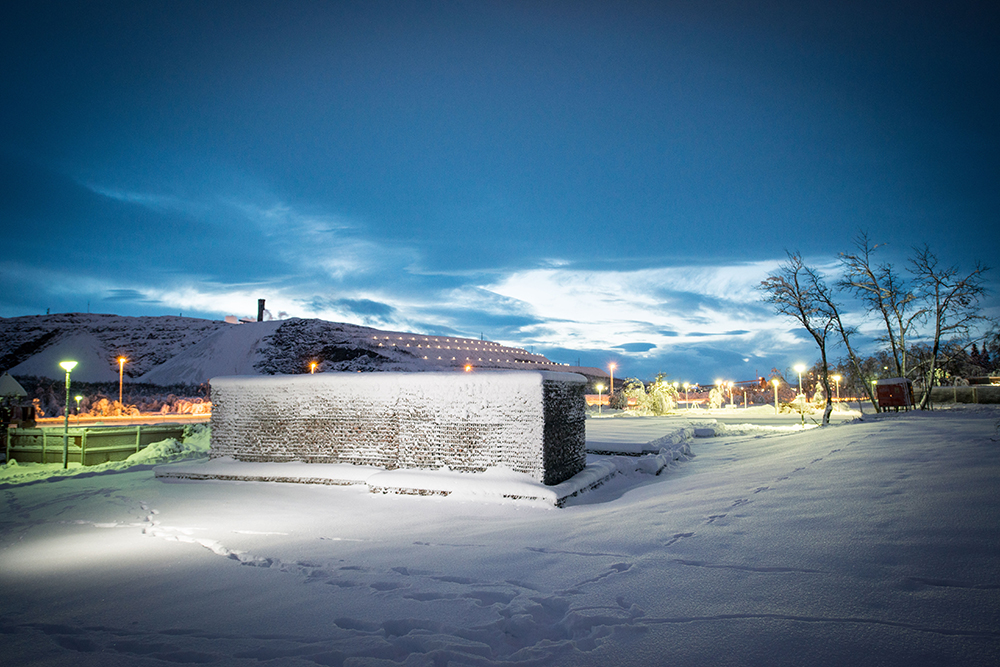
“We will move the town”, stated Kiruna Municipality in a press release in August 2004. The mining operations in Kiirunavaara cause cracks in the mountain and land deformation. Kiruna town must be gradually relocated further away from the mine.
The memorial landscape Logbook is being created gradually and in parallel with the deconstruction of the old town: cubist gabion structures are filled with crushed brick and concrete from the demolished buildings. Building foundations, individual entrances, flats or single rooms are marked. The structure of the town with its roads and its places remains. However, the architecture is now an echo of the buildings that once stood there.
Some of the taller gabions delineate the negative form of a room or a flat. Others create platforms and walls where one can enter the former building or perceive the contours of a kitchen. The panels of the buildings have been given a new function as seating. The artistic intervention has a built-in movement: Closest to the town, the forms are more complex and monumental, nearer the mine, the forms fall apart. There is also movement in how the material is transformed: from building to waste, to an artistic intervention that harbours a history and an identity, before finally becoming platforms for vegetation.
The final transformation of Logbook will take place when Gruvstadsparken, where the work is located, ends up behind a fence. As the demolition continues, the artistic intervention is gradually being realised. In a few years, the crack formations caused by the mining operations will be so close that the security fence will need to be moved closer to the town centre. The park will then end up in the area that is closed to visitors and the forms will be slowly reclaimed by vegetation and wildlife.
The ground deformations will break apart and fragment the traces of the former buildings. Parts of the material will fall down into the deformation cracks and be reclaimed by the mountain. Kiruna is surrounded by vantage points from which the artistic intervention will be visible as a logbook of the former Kiruna. A logbook which is in constant motion
On Sofia Sundberg, Karl Tuikkanen and Ingo Vetter
Sofia Sundberg is an interdisciplinary artist and educator based on the island of Öland, where she works as a course leader at Ölands konstskola. In Sundberg’s art, questions are raised about our relationship to nature, climate change and biological diversity.
Karl Tuikkanen is an artist and community planner. He lives and works in Stockholm. His works mostly start out from a narrative that manifests itself through various materials and expressions.
Ingo Vetter is an artist who works with sculpture, photography and installation. He regularly exhibits internationally and often collaborates with other artists. Since 2011, Vetter has taught sculpture at the University of the Arts, Bremen.
Find the artwork
Kiruna, Sverige

